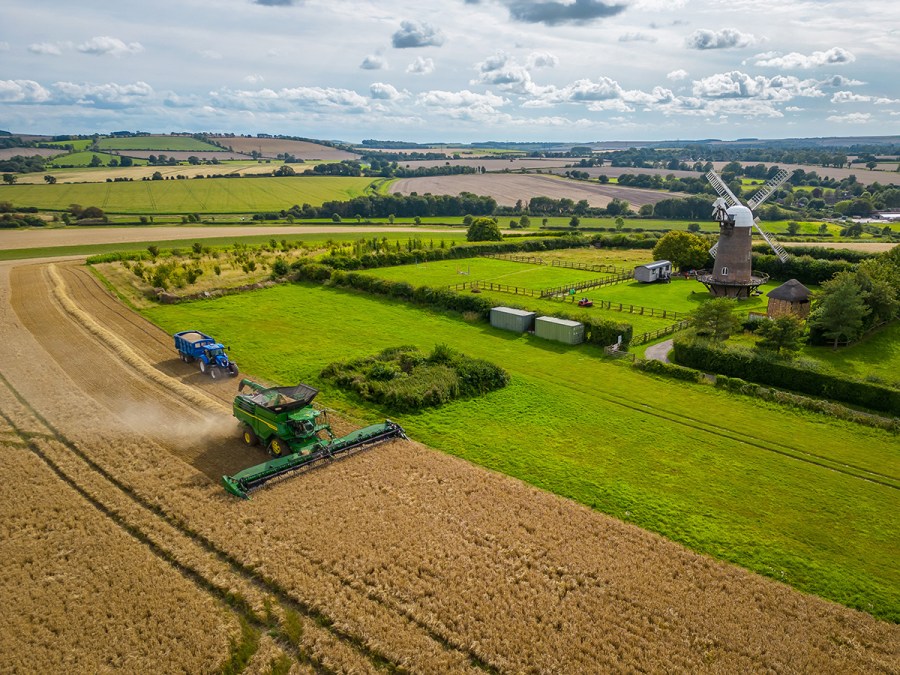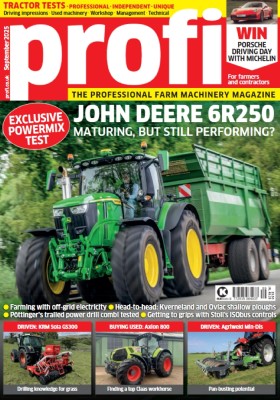While many farming businesses have addressed machinery costs by cutting down on tractor numbers and putting more hours on an expensive prime mover, it’s a bold move to reduce the harvesting fleet.
KEEPING IT BRIEF
- A pair of CR9.80s rotary combines were replaced with the X9.
- The X9 1100 has just wrapped up its third harvest at Manor Farm.
- Renewal times will be extended to overcome rising machine price
It was an exacting decision-making process for Manor Farm Wilton in Wiltshire, but one that resulted in a pair of New Holland CR9.80s replaced with a single John Deere X9 1110 in 2023. Now, three harvests down the line, partner David Lemon reflects on how it is going.
“I’m very glad we did it, and that the combine genuinely offers the outputs claimed,” he comments. “We’re going to need to farm more of the land to make a living in the future; without the safety net of SFP, we’d aimed to use the SFI so that the non-productive land could benefit the environment while we farmed the rest hard, but it looks like that’s not going to happen.”
The business crops seven farms over 1,250ha, each of which runs its rotation independently, albeit within the same wheat, spring barley, winter barley and oilseed rape plan. Contract combining covers a further 500ha.
“It’s effectively three crops each year, and as we’ve block cropped where possible, that’s 56ha per crop,” explains David. “That’s not a day’s work for two machines, so we were moving once or twice a day, with the difficulties and inefficiencies that road travel with 20m of headers, two combines and two tractors and trailers each brings.”
Work smarter
A rethink on cropping started to make using a single combine a possibility, he comments. “We were renewing our Countryside Stewardship, moving to 40ha of AB15 under the scheme and began growing 80ha of maize for AD, so the combining workload was coming down.”
The establishment armoury had also been revised, with the Quadtrac used to pull a Simba SL replaced with a 315hp New Holland T8, which could also come in for hauling duties if needed.
The process of demoing combines began, and David comments that he was open to all the options.
“We’ve got a great relationship with (dealer) TH White, who are local, but we’d gone from New Holland to Claas and back again. We were aware that we weren’t maximising the output of two combines but couldn’t find a single machine to do the job until we tried the John Deere X9.”
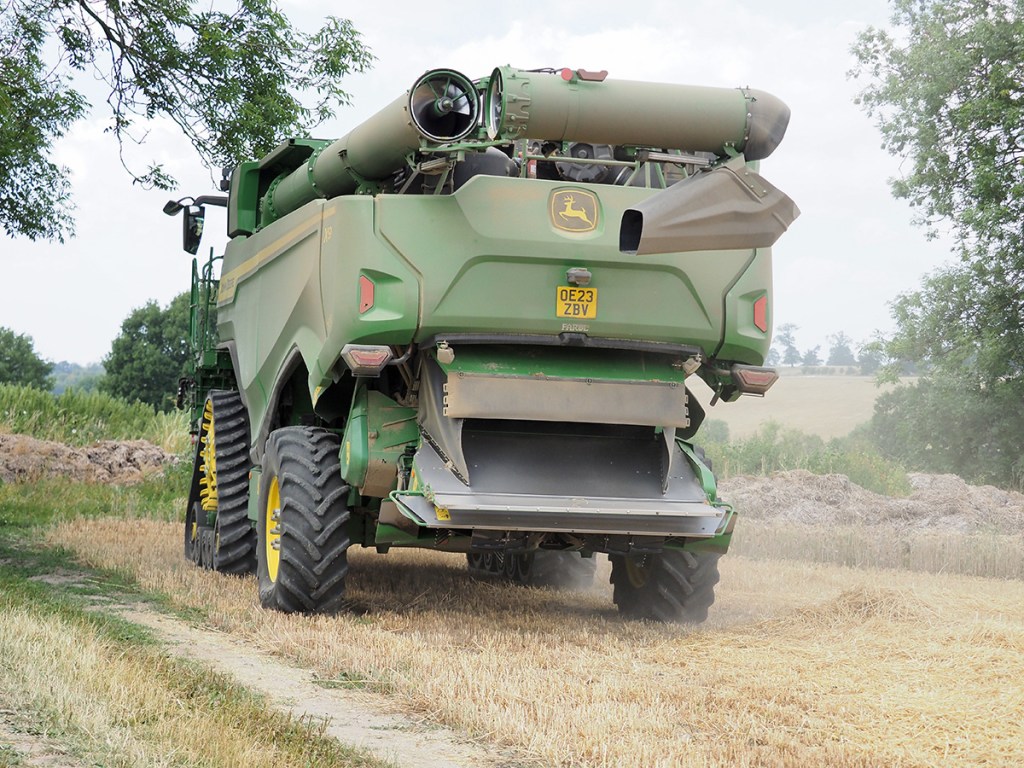
Launched at Agritechnica in 2019 (see profi Harvest Special 2020), the 700hp X9 1100 has a larger threshing and cleaning area, and wider crop channel than Deere’s previous flagship the S790, but within the same transport width – 3.5m on 610mm tracks. The twin rotor threshing system had also been enhanced: 610mm diameter rotors have wider inlet flighting and 15 threshing elements.
Concaves are adjusted and held in place hydraulically, which sees concave distance maintained, said by Deere to offer a better threshing performance. At the back of the rotors, eight-wing discharge beaters offer additional separation. Two sensors per rotor offer grain loss sensing, monitored in the cab. The cleaning shoe uses a stepped pan designed to handle more capacity and has extra air flow.
Deere’s Active Terrain Adjustment system automatically adjusts the combine’s sieve and chaffer openings and controls the cleaning fan speed, stabilising tailings levels on undulating ground. There are also six loss sensors on the sieves.
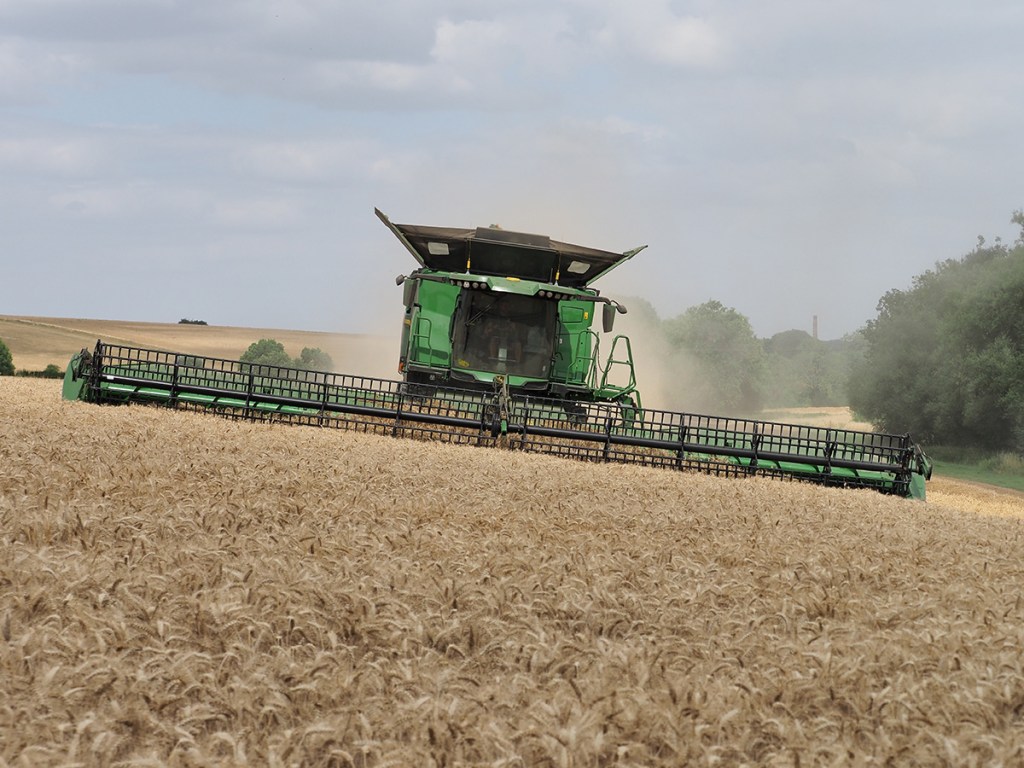
Header choice
David chose the 13.6m HDX draper header, which uses a hinged frame design to flex in a similar way to the MacDons used on the farm’s New Holland predecessors.
“Travelling at 6km/hr, the 13.6m table can certainly cover the ground,” he comments. “The biggest challenge is transport, of course; we have had to widen a few gateways. It is carried on a four-wheel steer trailer which brings its own challenges too. Our most experienced trailer driver is tasked with moving it.”
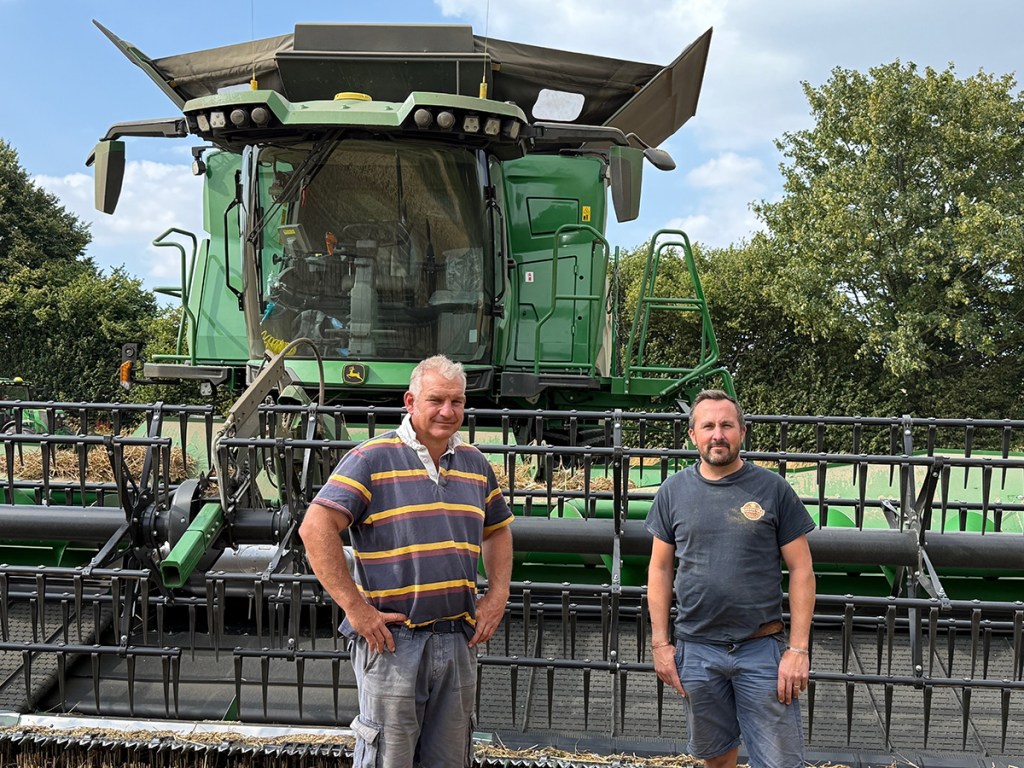
Operator Glynn Kingstone was closely involved in the selection of the new combine, he adds: “I’ve driven all types of combine and we did like the New Hollands because they were so simple. I’d driven other John Deeres and they didn’t impress.
We had the opportunity to try the X9 and it was better than I thought it would be; it matched up to its reputation.”
He says that over the previous two seasons it has averaged 95 tonnes/hr.
“It’s certainly possible to reach 100t/hr and I have had spot rates of 124t/hr. We can cover 6ha/hr when we are working in blocks.”
He points out that the combine’s settings are geared towards throughput and in order to minimise losses, he sets it up to prioritise quality.
“It always wants to push forward speed and if the conditions are right of course we’ll push on. It’s governed by the crop: where we’ve drilled at variable rate and used variable rate fertiliser the crop should be even, and you can go quicker without risking losses. It’s always going to be quicker than the New Hollands were – the 9.80 could harvest at 4.5km/hr but the X9 does 6.0km/hr easily.”
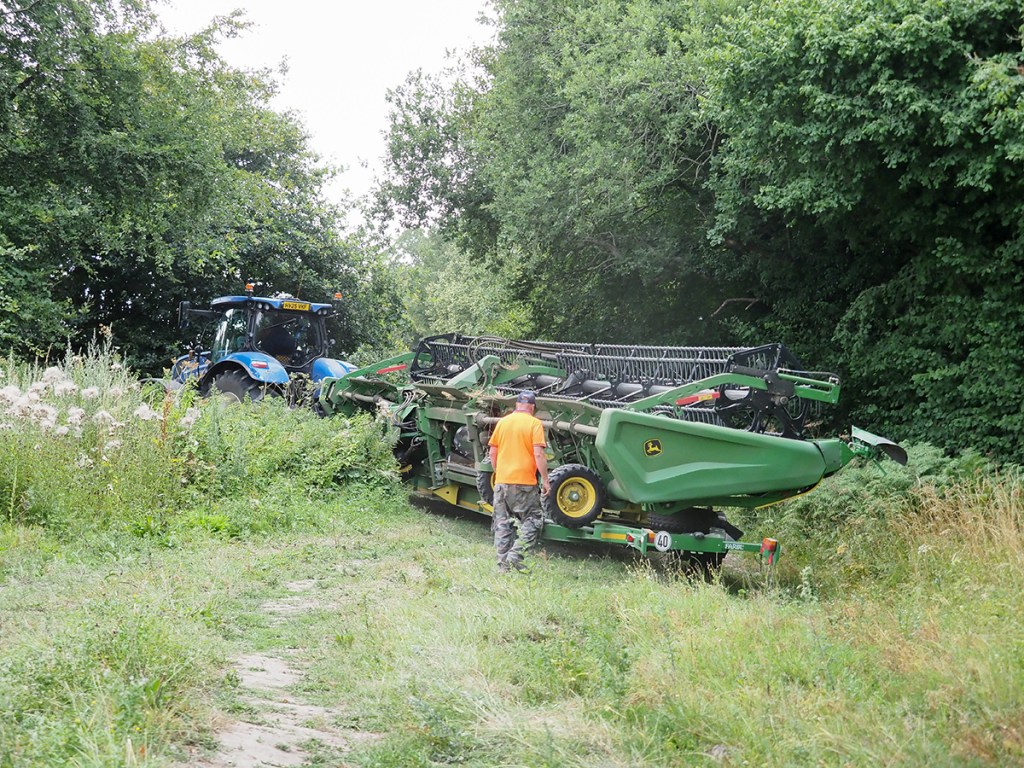
Glynn is unphased by wider header.
“The only time you think about it is when it’s on the trailer. The combine handles it well and the flexible design responds to dips and holes.”
The draper header design handles flatter crops by allowing the knife to be lowered right down, while the split reel works well, he comments.
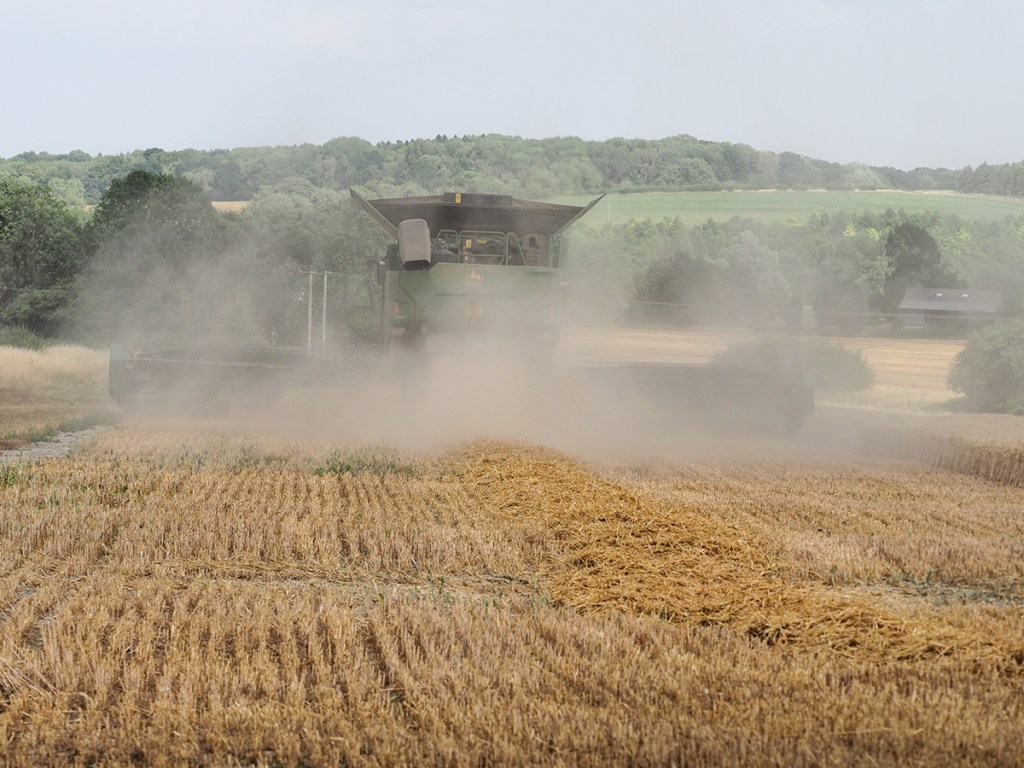
Wider headers mean longer augers; in a year where more straw is being dropped than chopped due to its value, the length keeps trailers off the straw rows, allowing them to dry quicker after rain and thus be baled sooner.
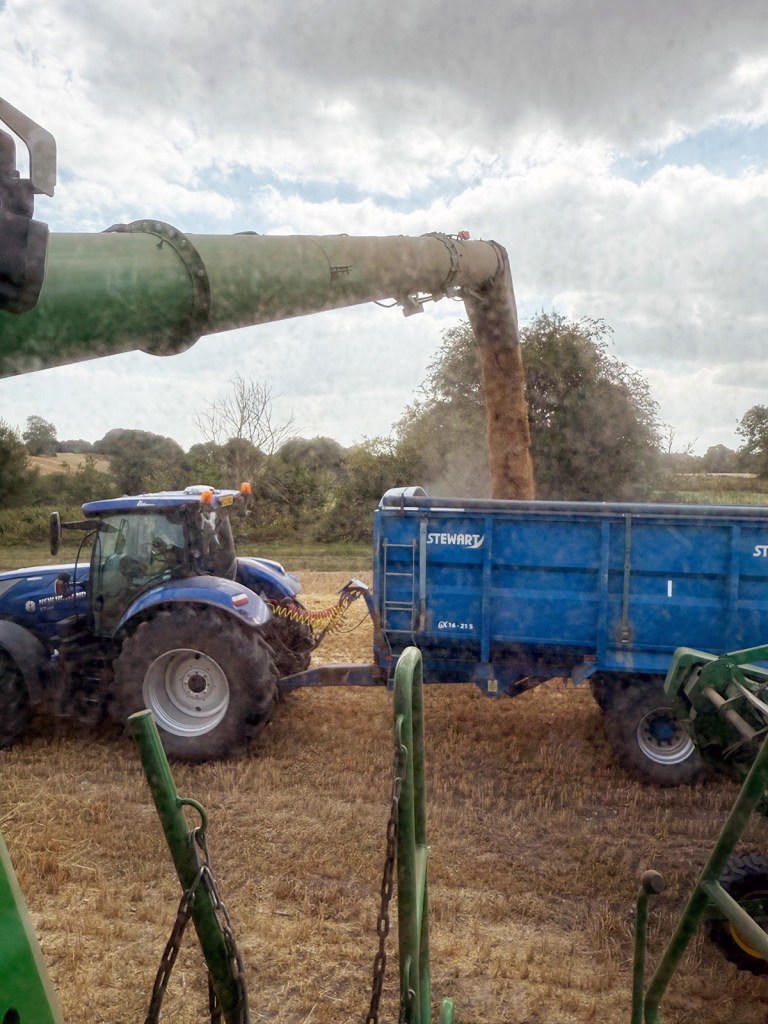
“The adjustable spout is a good feature; it’s easy to place grain where you want in the trailer,” comments Glynn.
Automation tech
Machine sync is one John Deere innovation that the business has not taken up – yet. There is one John Deere tractor in the haulage fleet that could be controlled by the combine, but David suggests that it’s less important for this business with highly experienced trailer drivers on hand.
However, John Deere’s Operations Center takes care of a range of functions from yield logging to communication with the service team at dealer Farol. Interchangeable twin screens monitor autosteer, machine functions and harvest settings plus camera feeds; there’s a separate ‘infotainment’ screen which also gets Glynn’s seal of approval.
Good old-fashioned dedication to looking after the machine is complemented by straightforward servicing requirement. Glynn reckons the grease points take half an hour at most, with more major greasing taken care of at the first service.
“It’s got fewer belts than either the Claas or New Holland and it’s a very clean combine in general. The reversing fan keeps the radiators clean, so I probably only need to blow them down halfway through the season.”
Although the X9 was a relatively new proposition for the UK when it arrived at Manor Farm, Glynn says that Farol’s engineers were already up to speed on it, while they had the promise of a replacement X9 in the event of a major breakdown.
“We never had any real issues; there were some unexpected losses in oilseed rape, put down to a seal in the sieves and soon rectified. We also find that Deere is constantly making updates to the machine which are to our benefit, such as modifying the chopper hood to improve the spread. “
Grain logistics
Moving to one combine has also made the management of the harvest simpler – with two machines, both needed to be empty when moving fields; the X9 has just one 11 tonne tank to empty.
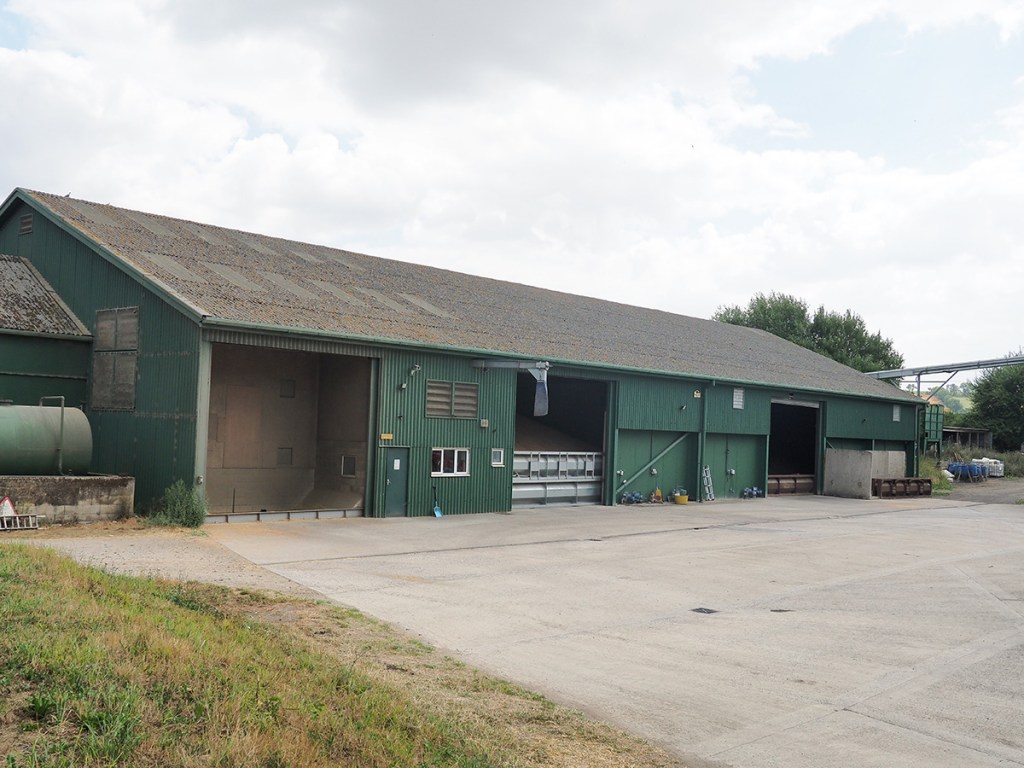
Grain storage was another consideration. The farm’s main store was built 30 years ago on land close to the main holding, David explains. “We had a store in the village before that, but a new neighbour objected to the noise of the dryer. We were lucky that one of our farmers was happy to provide a piece of land for a new store, and we called the dryer Gandalf after his dog!”
Combining contract farms have their own storage and there are two satellite stores which are mainly used for oilseed rape, but the main site has 6,500 tonnes capacity.
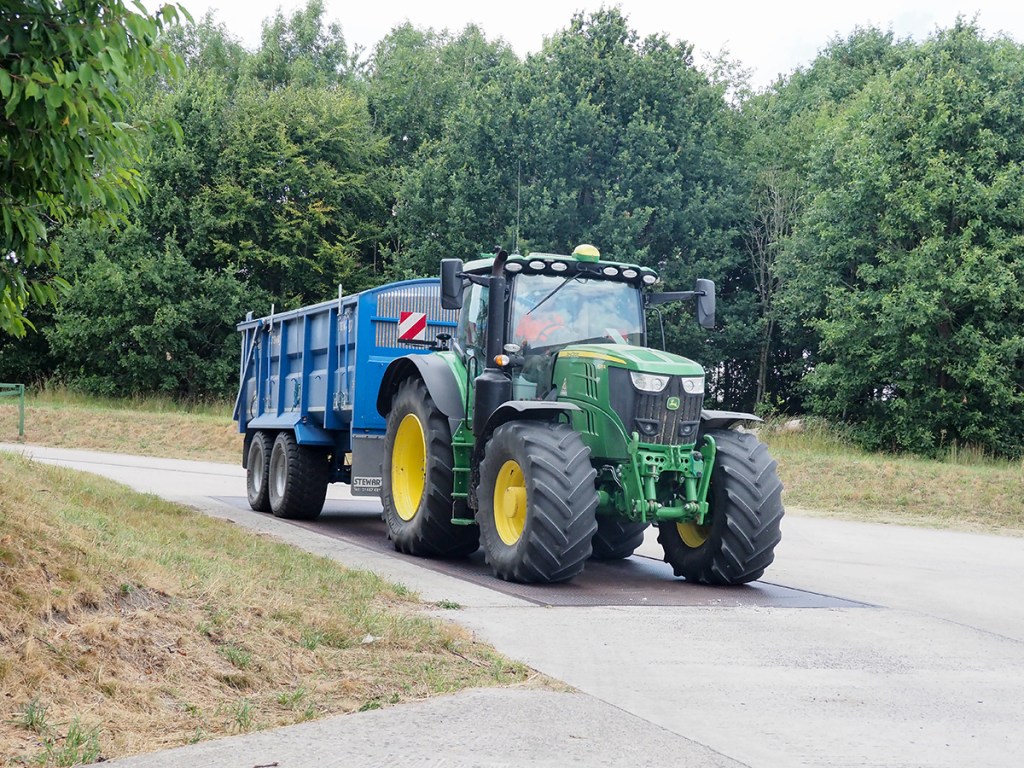
“Each trailer goes over the weighbridge so we know exactly which has come from particular farm,” David explains. “Moisture is averaged out across the total crop so no-one ‘wins or loses’; we keep a close eye on quality.”
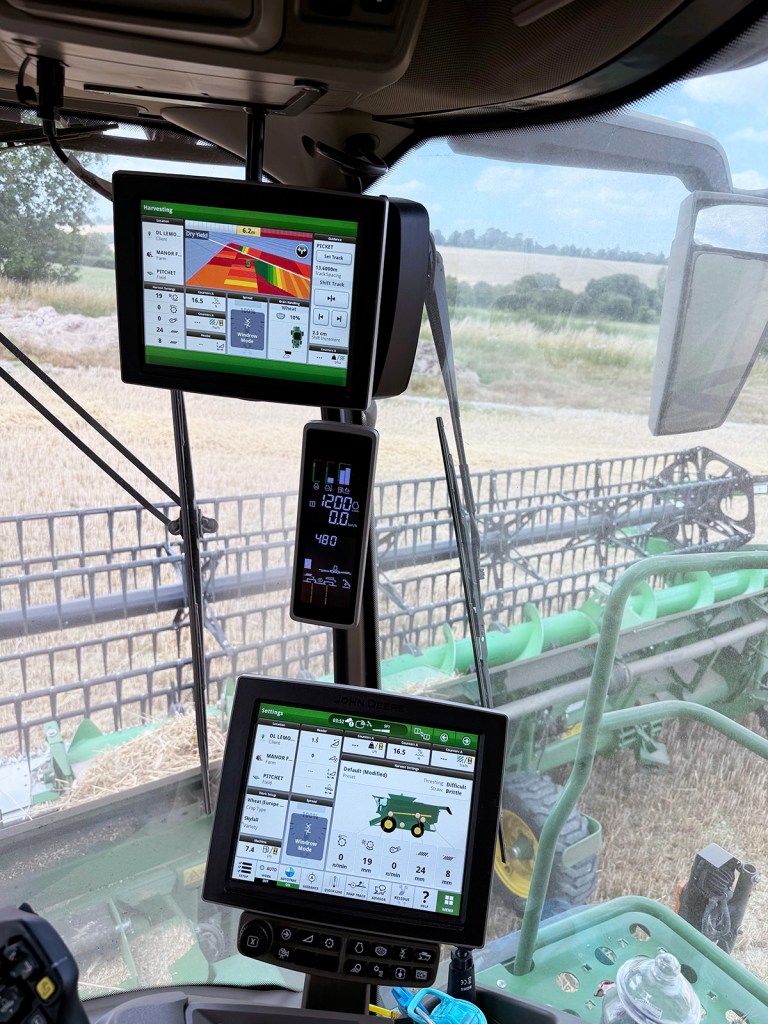
He suggests that using the weighbridge is more reliable than any brand’s yield monitors, “Allowing for dust and moisture it is never more than 0.5% out.”
The operation is very much geared to precision, using Soyl for P&K mapping and applying VR nitrogen via a Bateman sprayer. “Everything goes into Gatekeeper; I don’t feel the need to reinvent the wheel.”
Darren Palin, who manages the store at harvest alongside duties with the drill, fertiliser spreader and the sprayer for the rest of the year, reckons that the store was almost at capacity with two combines.
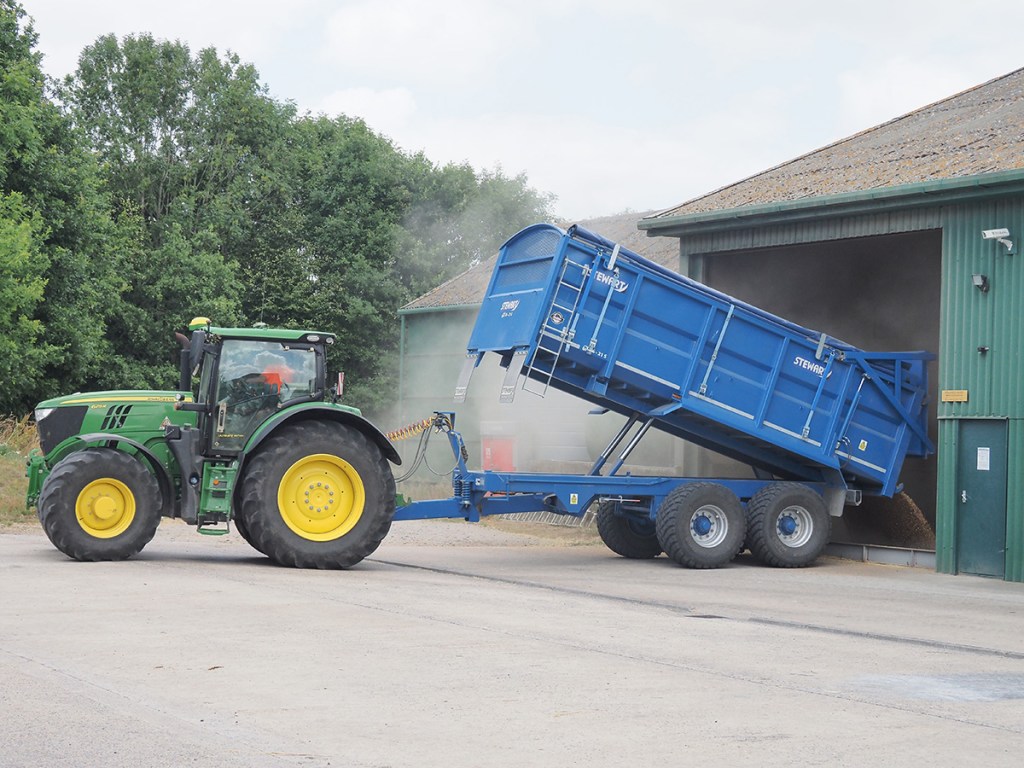
“I would say we were putting 75 tonnes/hr through the dryer, and if it was wet you’d have another three or four hours putting grain through once the combines had stopped. We’ve got two intake systems, so it coped, but 70t/hr from one combine is more manageable – the intake and the dryer are better matched to combine capacity now.”
The second Svegma dryer was added after the initial build and they have 30t/hr capacity each. There’s the ability to clean and pre-clean 60t/hr from the 100t/hr intake system, plus 600 tonnes wet grain storage space.
After three years, what’s the verdict?
David discusses the immediate cost savings: “Obviously it is one less driver, but there’s also the fuel: we were putting 800 litres of diesel in two combines, and now it’s only in one, saving £15,000 per season.”
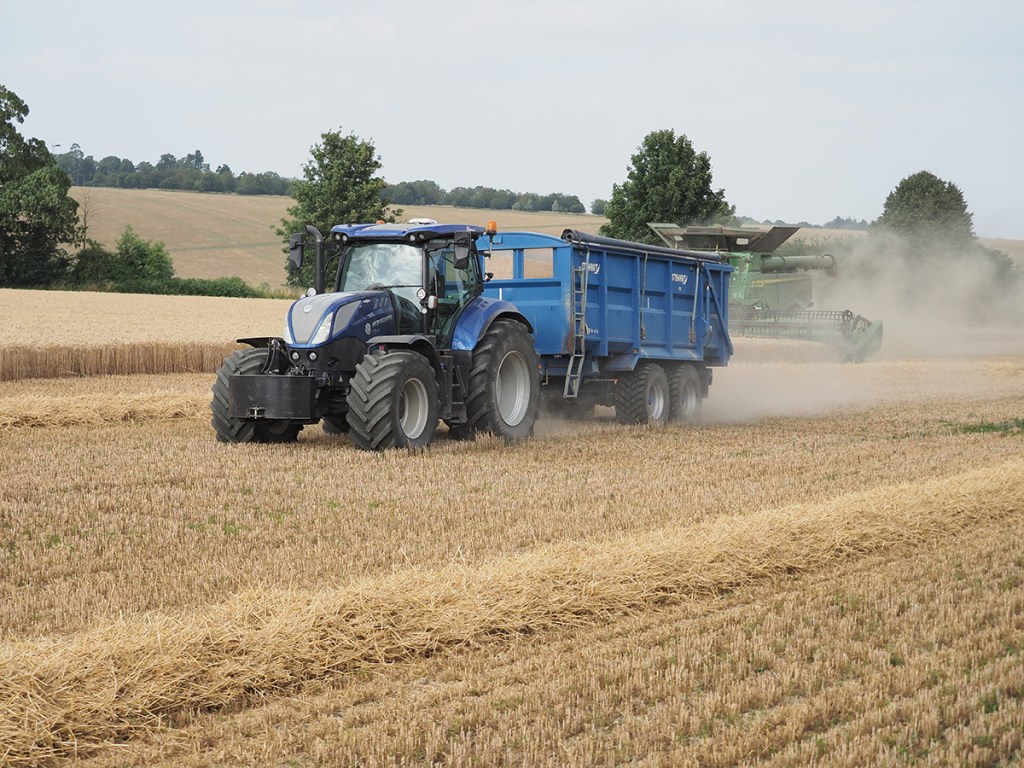
“We needed four tractors for the two combines; now three can keep up, or two if the field is close to home and the grain store. This means that the third driver and ‘spare tractor’ can get on with other jobs until they are needed.”
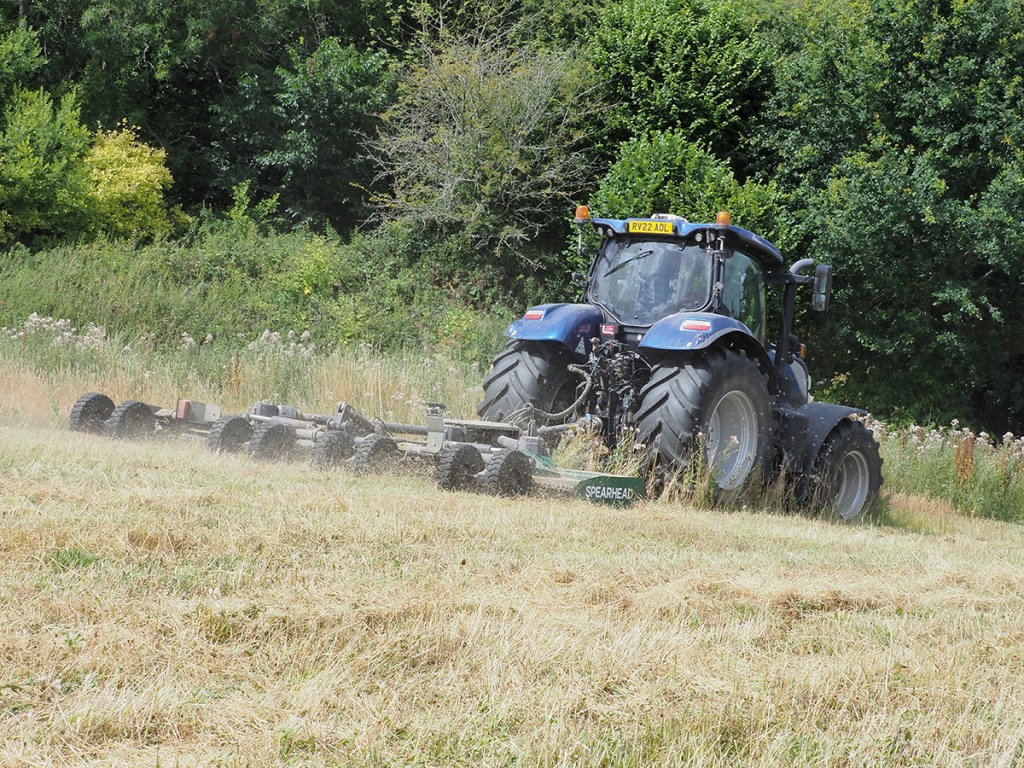
He emphasises the importance of a skilled and dedicated operator, not just to drive but also to look after the machine.
“Glynn will blow down and service the combine each day, even if it’s a 1am finish, so we are ready to go at 9.30am if the conditions are right. Fortunately, we haven’t had too many early starts this year, apart from when we were in the OSR during a heatwave.”
Yields have fared well for the difficult year – 10t/ha for Skyfall and 11t/ha for feed wheat. Bamford Group 3 soft milling wheat also made 10.5 tonnes/ha. But costs are always at the forefront of David’s mind.
“Commodity prices are not keeping pace with our high costs, especially for machinery. One reason for buying the X9 in 2023 rather than waiting until it was more proven was because we wouldn’t have afforded the seven-figure price it went to the following year.”
Like many business owners, David says that he will need to keep machinery longer – the Bateman would historically have been changed at five years, but will now stay on the farm for seven years, with a major overhaul along the line.
“Residual value is certainly a concern with this combine as it is not a machine for every farm. There may have been a market for it in the Ukraine, but that’s not available to us now. We could have to make it last 10 years; changing a combine after four years is just not viable any more.”
More unpredictable weather is another factor that would give many farms anxious moments having gone from two combines to one. He concedes that in a wet year, the system might be maxed out for capacity, but says:
“We mainly ran the two combines together on larger blocks, so it’s not much different. Having two outfits undoubtedly gives you more flexibility, but we do have the benefit being able to dry and store a large throughput from one machine. It might not be an option when unloading into a smaller store.
“We’ve actually been able to add another 400ha of contract combining to the workload this year, and there’s the possibility of a further 340ha in 2026. We have to be wrapped up by September on this land, but you know that you can comfortably get through 65ha by 11pm it gives you that confidence.”
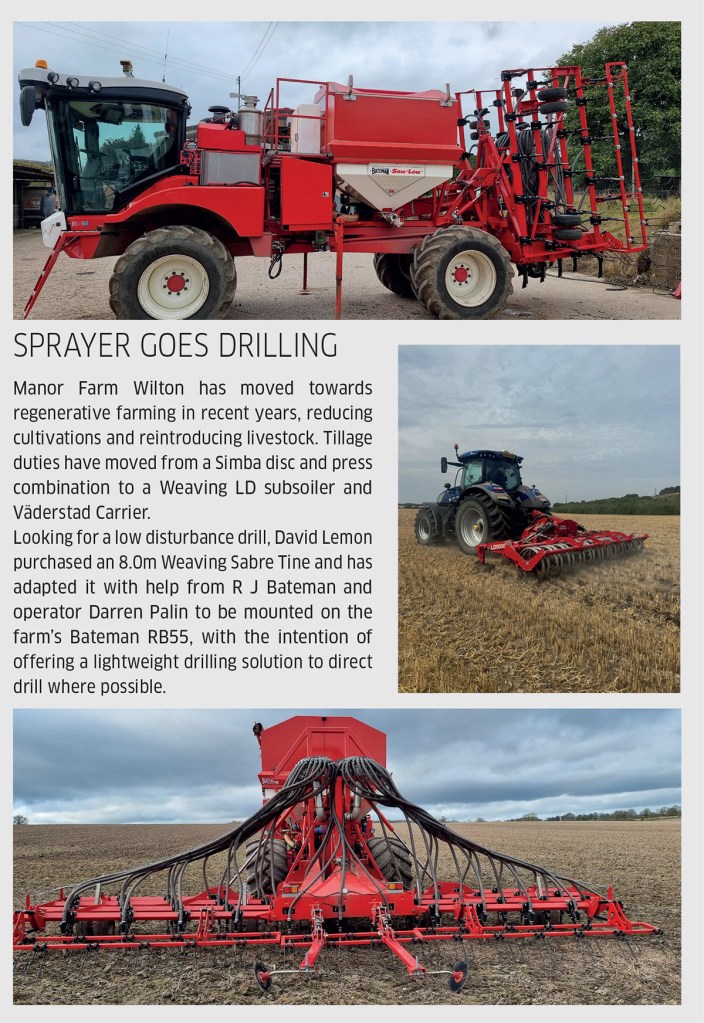
Jane Carley
For more up-to-date farming news click here and subscribe now to profi and save.

